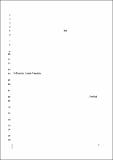Por favor, use este identificador para citar o enlazar a este item:
http://hdl.handle.net/10261/113220COMPARTIR / EXPORTAR:
 SHARE SHARE
 CORE
BASE CORE
BASE
|
|
| Visualizar otros formatos: MARC | Dublin Core | RDF | ORE | MODS | METS | DIDL | DATACITE | |

| Campo DC | Valor | Lengua/Idioma |
|---|---|---|
| dc.contributor.author | Vilà, Montserrat | - |
| dc.contributor.author | Rohr, Rudolf P. | - |
| dc.contributor.author | Espinar, José L. | - |
| dc.contributor.author | Hulme, Philip E. | - |
| dc.contributor.author | Pergl, Jan | - |
| dc.contributor.author | Le Roux, J.J. | - |
| dc.contributor.author | Pyšek, Petr | - |
| dc.date.accessioned | 2015-04-01T07:38:13Z | - |
| dc.date.available | 2015-04-01T07:38:13Z | - |
| dc.date.issued | 2015 | - |
| dc.identifier | doi: 10.1111/geb.12249 | - |
| dc.identifier | issn: 1466-8238 | - |
| dc.identifier.citation | Global Ecology and Biogeography 24: 139- 146 (2015) | - |
| dc.identifier.uri | http://hdl.handle.net/10261/113220 | - |
| dc.description.abstract | © 2014 John Wiley & Sons Ltd. Aim: To assess how the magnitude of impacts of non-native plants on species richness of resident plants and animals varies in relation to the traits and phylogenetic position of the non-native as well as characteristics of the invaded site. Location: Global. Methods: Meta-analysis and phylogenetic regressions based on 216 studies were used to examine the effects of 96 non-native plant species on species richness of resident plants and animals while considering differences in non-native species traits (life-form, clonality or vegetative reproduction, and nitrogen-fixing ability) and characteristics of the invaded site (ecosystem type, insularity and climatic region). Results: Plots with non-native plants had lower resident plant (-20.5%) and animal species richness (-26.4%) than paired uninvaded control plots. Nitrogen-fixing ability, followed by phylogeny and clonality were the best predictors of the magnitude of impacts of non-native plants on native plant species richness. Non-nitrogen-fixing and clonal non-native plants reduced species richness more than nitrogen-fixing and non-clonal invaders. However, life-form and characteristics of the invaded sites did not appear to be important. In the case of resident animal species richness, only the phylogenetic position of the non-native and whether invaded sites were islands or not influenced impacts, with a more pronounced decrease found on islands than mainlands. Main conclusions: The presence of a phylogenetic signal on the magnitude of the impacts of non-native plants on resident plant and animal richness indicates that closely related non-native plants tend to have similar impacts. This suggests that the magnitude of the impact might depend on shared plant traits not explored in our study. Our results therefore support the need to include the phylogenetic similarity of non-native plants to known invaders in risk assessment analysis. | - |
| dc.rights | openAccess | en_EN |
| dc.subject | N-fixing, phylogeny | - |
| dc.subject | Meta-analysis | - |
| dc.subject | Insularity | - |
| dc.subject | Ecological impact | - |
| dc.subject | hylogenetic regression: Weeds | - |
| dc.subject | Biological invasions | - |
| dc.subject | Alien species | - |
| dc.title | Explaining the variation in impacts of non-native plants on local-scale species richness: The role of phylogenetic relatedness | - |
| dc.type | artículo | - |
| dc.identifier.doi | 10.1111/geb.12249 | - |
| dc.embargo.terms | 2015-10-22 | - |
| dc.date.updated | 2015-04-01T07:38:14Z | - |
| dc.description.version | Peer Reviewed | - |
| dc.language.rfc3066 | eng | - |
| dc.type.coar | http://purl.org/coar/resource_type/c_6501 | es_ES |
| item.openairetype | artículo | - |
| item.grantfulltext | open | - |
| item.cerifentitytype | Publications | - |
| item.openairecristype | http://purl.org/coar/resource_type/c_18cf | - |
| item.fulltext | With Fulltext | - |
| Aparece en las colecciones: | (EBD) Artículos | |
Ficheros en este ítem:
| Fichero | Descripción | Tamaño | Formato | |
|---|---|---|---|---|
| Assessing impacts final_CSIC-Digital.pdf | 387,97 kB | Adobe PDF |  Visualizar/Abrir |
CORE Recommender
SCOPUSTM
Citations
55
checked on 13-abr-2024
WEB OF SCIENCETM
Citations
54
checked on 22-feb-2024
Page view(s)
375
checked on 19-abr-2024
Download(s)
371
checked on 19-abr-2024
Google ScholarTM
Check
Altmetric
Altmetric
NOTA: Los ítems de Digital.CSIC están protegidos por copyright, con todos los derechos reservados, a menos que se indique lo contrario.
